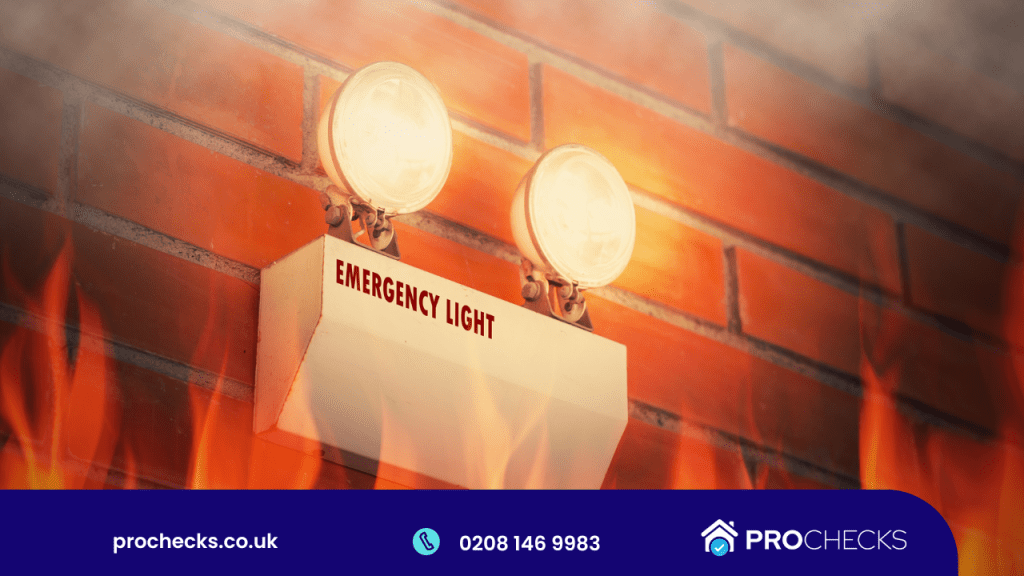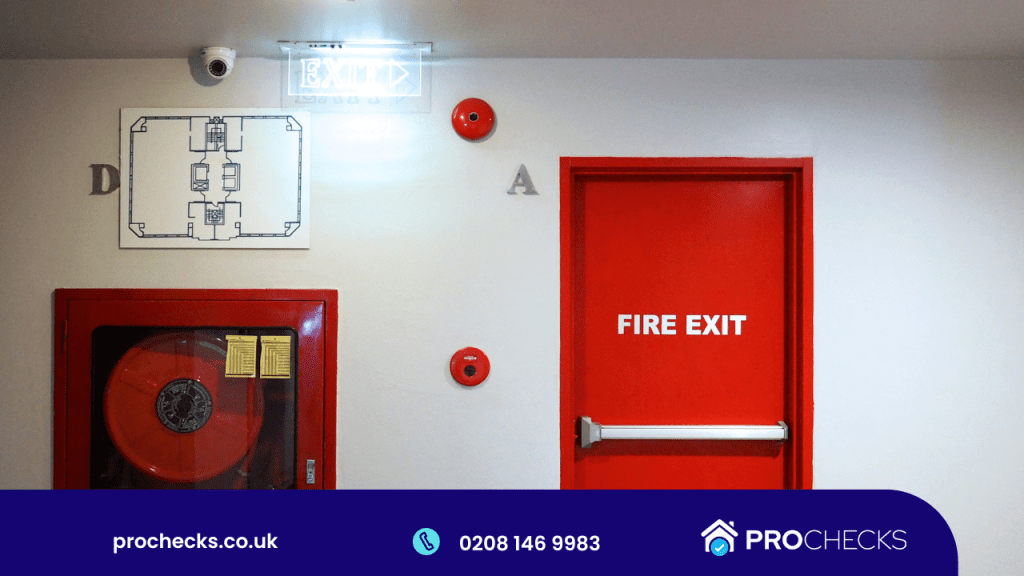In London, the stringent adherence to emergency lighting regulations is not merely a statutory obligation but a fundamental aspect of building safety management. As outlined in the Comprehensive Guide to Emergency Lighting Regulations, the city mandates strict compliance with both national standards and local directives to ensure that illumination in emergencies is adequate, functional, and capable of guiding occupants to safety. This discussion opens with an exploration of why these regulations exist, their legal underpinnings, and the consequences of non-compliance. As we unpack these elements, one might ponder how well-prepared our current infrastructures are in the face of unforeseen emergencies. Let’s understand the Comprehensive Guide to Emergency Lighting Regulations in London.
Key Takeaways
- Compliance with the Regulatory Reform (Fire Safety) Order 2005 and BS 5266 is mandatory in London.
- Emergency lighting must be regularly tested and maintained for functionality and safety.
- Installation guidelines require clear marking of exits and continuous pathway illumination.
- Annual inspections by qualified professionals are required to ensure regulatory compliance.
- Non-compliance can result in substantial fines and legal repercussions.
Importance of Emergency Lighting
Ensuring the installation of emergency lighting is crucial for maintaining safety in buildings during power outages or other emergencies. This proactive measure significantly benefits evacuation processes, offering a clear, illuminated path to exits, thereby minimizing confusion and enhancing the ability to evacuate occupants swiftly and safely.
The presence of well-maintained emergency lighting systems serves as a fundamental component of safety assurance within any building structure. Emergency lighting supports critical visibility in darkness or smoke-filled environments, which is essential for preventing injuries caused by trips, falls, or collisions with obstacles during hurried evacuations.

It also aids in maintaining order, reduces panic, and facilitates the efficient use of escape routes. Additionally, emergency lighting is instrumental in assisting rescue operations by ensuring that emergency responders can navigate through the building effectively.
The strategic placement of emergency lights at key points such as stairwells, corridors, and near emergency exits ensures that these areas are never without illumination during a crisis. This setup not only complies with safety guidelines but also instills a sense of security among building occupants, ultimately fostering a safer environment for all.
Legal Requirements and Standards
While the importance of emergency lighting is widely recognized, adhering to the legal requirements and standards set forth by relevant authorities is mandatory for building owners and managers.
In London, emergency lighting systems must comply with the Regulatory Reform (Fire Safety) Order 2005, which integrates the British Standards BS 5266 and the European Standard EN 1838. These regulations ensure that lighting is adequate, regularly tested, and maintained, providing guidance and illumination during emergencies to facilitate safe evacuation.
Recent regulatory updates have emphasized the need for enhanced emergency lighting systems that are capable of operating in a broader range of scenarios, including terrorist threats and severe weather conditions. Compliance not only meets legal standards but significantly enhances safety, reducing the potential for injury or death during emergencies.
Building owners must ensure that their systems are inspected and certified by qualified professionals annually and that any deficiencies are promptly addressed.
Furthermore, the integration of new technologies and safety enhancements has been encouraged, including the adoption of LED lighting, which offers greater reliability and efficiency.
These advancements help in meeting both current and future safety standards, ensuring that emergency lighting systems are robust, effective, and compliant with all legal requirements.
Emergency Lighting Types
Building on the regulatory framework discussed, it is important to explore the various types of emergency lighting available, each designed to meet specific safety and operational needs during an emergency.

The primary category, escape route lighting, is critical for delineating the paths leading to exits, thus enabling safe and swift egress. This type of lighting is strategically installed along corridors, stairways, and near signs directing toward exits, ensuring that evacuation routes are always well-lit during power failures or other emergencies.
Another essential type is maintained lighting, which operates continuously, whether there is a power outage or not. This dual-functionality not only enhances the regular lighting environment but also ensures that illumination is immediate and constant when normal power supplies fail.
Maintained lighting is often employed in high-traffic areas and places where constant illumination is crucial for safety and security, such as hospitals and 24-hour retail spaces.
Both escape route and maintained lighting systems are designed to conform to stringent regulatory standards, including the British Standard 5266, which stipulates the installation and performance requirements for emergency lighting.
Ensuring these systems are properly implemented is vital for compliance, safety, and the well-being of building occupants during emergencies.
Installation and Placement Guidelines
To properly implement emergency lighting, it is crucial to adhere to specific installation and placement guidelines that optimize functionality and ensure regulatory compliance. These guidelines are fundamental in ensuring that emergency lighting design effectively supports evacuation protocols and safety measures in emergencies. The placement strategies for emergency lights must prioritize visibility and accessibility, illuminating all escape routes and potential obstacles within the premises.
Here is a detailed breakdown of key guidelines:
| Aspect | Guideline |
|---|---|
| Exit Identification | Lights must identify all exit routes and exit doors. |
| Pathway Illumination | Ensure continuous lighting along escape paths to avoid dark spots. |
| Height and Positioning | Install lights at a height that prevents tampering and ensures visibility. |
| Obstacle Lighting | Illuminate all potential obstacles along escape routes to minimize hazards. |
| Compliance Checks | Regularly verify that installations meet local and national standards. |
Effective emergency lighting installation requires meticulous planning and adherence to these guidelines. By focusing on strategic placement and robust emergency lighting design, safety during an evacuation is significantly enhanced, fulfilling both legal obligations and ethical responsibilities towards building occupants.
Testing and Maintenance Protocols
Ensuring the effectiveness of emergency lighting systems requires rigorous testing and maintenance protocols that are vital for compliance with safety regulations. Regular checks are essential not only for legal compliance but also for ensuring the functionality and reliability of emergency lighting installations during critical situations.

These protocols are designed to verify system readiness and operational capability, which are crucial during unexpected power failures.
Key aspects of testing and maintenance include:
- Monthly Functionality Tests: Each emergency light must be tested monthly. This brief test ensures that the lighting operates correctly and illuminates adequately in emergency scenarios.
- Annual Full-Duration Tests: Conducting a full-rated duration test annually assesses the battery longevity and the overall performance of the emergency lighting system. This test checks if the lights can remain operational for their complete rated duration, typically three hours.
- Routine Emergency Drills: Integrating emergency lighting systems into regular emergency drills verifies that the lights function as expected in real-world scenarios, providing an opportunity for assessing both the system and occupant readiness.
Adherence to these protocols not only ensures compliance with stringent safety standards but also enhances the safety of building occupants by guaranteeing that emergency lighting systems function effectively when most needed.
Compliance and Penalties
Adherence to established testing and maintenance protocols lays the foundation for regulatory compliance and helps mitigate the risks associated with non-compliance in emergency lighting systems.
For building operators in London, understanding the compliance challenges and penalty implications is crucial to maintaining not just legal, but operational standards. The Regulatory Reform (Fire Safety) Order 2005 stipulates strict adherence to BS 5266 and BS EN 1838, setting out requirements for the installation and upkeep of emergency lighting.
Non-compliance with these standards can lead to severe penalty implications. Building owners may face substantial fines and in cases of gross negligence, legal prosecution.
Moreover, failure to meet the stipulated requirements can result in insurance voidance, adding financial insult to injury. It is incumbent upon property managers and owners to conduct regular audits, ensuring that all systems are not only fully functional but also documented meticulously to demonstrate compliance in the face of inspections.
For businesses, the cost of non-compliance far outweighs the investment in proper emergency lighting systems and protocols.
Staying informed about regulatory updates and engaging with compliance experts can prevent the pitfalls of non-compliance and uphold the safety and integrity of the premises.
Emergency Lighting Products
Selecting the right emergency lighting products is essential for ensuring compliance with safety regulations and facilitating effective emergency response. To meet the stringent requirements of London’s safety protocols, it’s crucial to opt for advanced solutions that combine reliability with technological innovation.
LED technology has revolutionized emergency lighting, offering longer lifespans, better energy efficiency, and reduced maintenance costs compared to traditional lighting options.
Key features to consider when selecting emergency lighting products include:
- LED Emergency Lights: These are highly durable and consume less power, making them cost-effective for long-term use. They provide bright, clear lighting that is crucial during an emergency.
- Emergency Exit Signs: Properly illuminated exit signs are vital for guiding occupants to safety. Look for signs that utilize LED technology for consistent visibility.
- Integrated Systems: Modern emergency lighting systems integrate sensors, central monitoring, and control mechanisms, enhancing the overall effectiveness and responsiveness of emergency protocols.
Choosing products that are compliant with both local and international standards is not just about adhering to legal requirements; it’s about ensuring that every occupant in a building can safely find their way out during an emergency.
This emphasis on quality and compliance should guide every purchase decision in the realm of emergency lighting.
Managing Cookies and Privacy
In today’s digital age, managing cookies and ensuring privacy on websites has become a crucial aspect of regulatory compliance and user trust. The implementation of robust cookie consent mechanisms and transparent privacy policies is not merely about legal necessity but also about fostering trust and ensuring the integrity of user data.
When visitors enter a site, clear communication regarding the use and management of cookies is paramount. This involves not just alerting users to the presence of cookies but also providing them with the power to control their cookie settings. Below is a detailed breakdown of essential aspects of cookie management and privacy compliance:
| Aspect | Description |
|---|---|
| Cookie Consent | Users must actively consent to non-essential cookies, ensuring autonomy over personal data usage. |
| Privacy Policies | Detailed documents must clarify the scope of data collection, use, and user rights, enhancing transparency. |
| Compliance | Adherence to regulations like GDPR and ePrivacy Directive is mandatory, reflecting the commitment to user privacy. |
| User Control | Providing users with tools to manage cookie preferences empowers them and reinforces trust. |
Adopting these practices not only conforms to stringent regulatory frameworks but also positions a platform as a responsible entity that values user privacy and data security.
Conclusion
In conclusion, adherence to the established regulations and standards for emergency lighting in London is imperative for ensuring occupant safety during power outages and emergencies. Regular testing, proper installation, and diligent maintenance of emergency lighting systems are essential to comply with legal requirements and to minimize potential liabilities. It is crucial for building managers and owners to understand their responsibilities to uphold these standards, thereby enhancing safety and facilitating efficient evacuation procedures.









